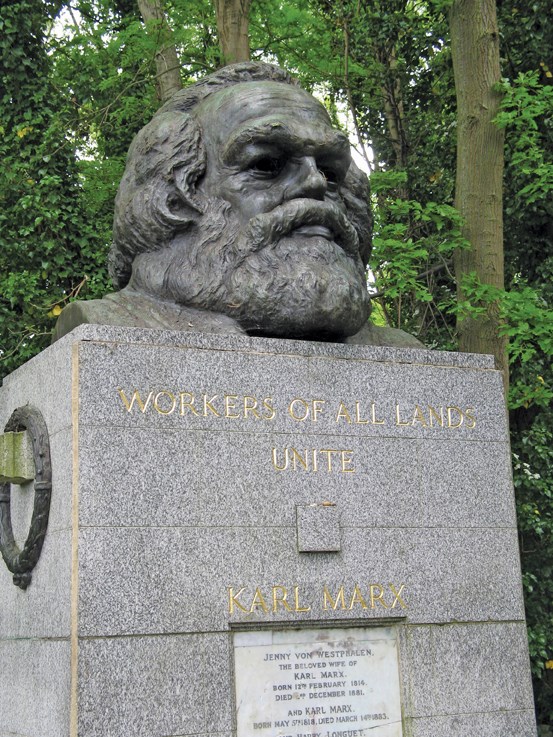Graveyards are not usually on the itinerary for a tourist to London – unless it’s almost Halloween and you are not afraid of a little ghostly presence. Highgate Cemetery is one of eight older cemeteries in London, England, developed in the 1830s to relieve the burgeoning number of corpses buried under the city’s churches where their decay gave rise to disease and insect infestations.
The gated West High-gate is accessible only by guided tour for £12, and is well worth the experience. It is here that the formally designed, elaborate gravesites of the last two centuries have been overgrown by gnarly sycamores and flowering bushes.
Michael Faraday, a scientist noted for his work on electromagnetism, is buried here, as is the family of Charles Dickens (the writer is buried in Westminster Abbey). Christina Rossetti, the romantic poet, is buried in a flowery glade along with other members of her family. A walk through these gardens is quite pretty – until you arrive at the creepier parts.
The Egyptian Passage is a dark tunnel of private vaults on either side, each secured by a cast iron door. It once had a roof that has since crumbled, but the gloom remains, homes for the dead – also home a large, rare, orb weaver spider that likes the dark and quiet. Visitors must walk through this passage to reach the Circle of Lebanon, a ring of chambers surmounted by a giant cedar of Lebanon tree. Near here the tour group stops to see if any new flowers have been left at the resting place of writer Radclyffe Hall, whose book The Well of Loneliness spoke of the then forbidden subject of lesbianism.
The catacombs of Highgate have been built into the side of the hill, not underground like most catacombs. They are dark and dank – not a place to hang around for very long, much less eternity.
The West Highgate tour is recommended for its history. There are few new graves, although one of the most prominent newer ones is that of Alexander Litvinenko, a former officer of the Russian Federal Security Service, poisoned by polonium in London before he was about to spill state secrets.
East Highgate is open to the public for a £4 admission fee and is most famous as the gravesite of economist and socialist Karl Marx. Though originally buried in a more secluded site, followers of Marxism urged the relocation of his grave and the commission of a magnificent bust of the man. Other activists such as Claudia Jones, journalist and civil rights campaigner, are buried nearby. It’s also interesting to see the grave of George Eliot, the female writer of Silas Marner who adopted a man’s name so her work would be taken seriously. A newer grave is that of Douglas Adams, the author of The Hitchhiker’s Guide to the Galaxy.
After the Gothic gloom of the West side, the East side is refreshing, especially a memorial designed by artist Patrick Caulfield for his own grave. Sculpted in stone, it consists of only one word: DEAD. See www.highgate-cemetery.org for more information.



